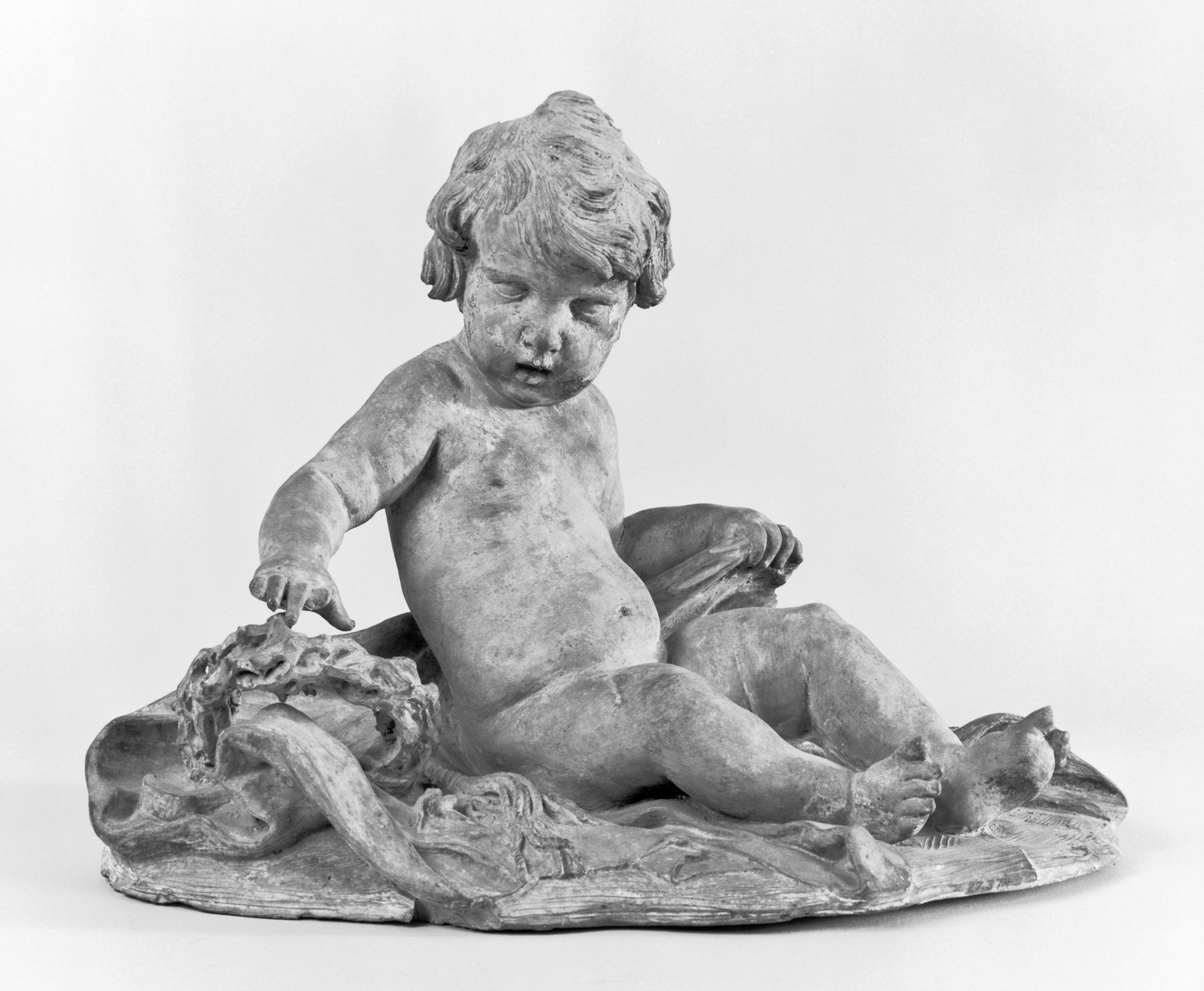The Infant Christ with Instruments of the Passion
(Baroque Europe )
The infant Christ, grave and meditative, reaches out to touch the crown of thorns, a painful symbol of his future sacrifice, beside which lie the scourge with which he will be whipped and bent nails drawn from the cross upon which he will be crucified. These objects served traditionally as attributes of the Passion of Christ and would have been easily recognized by viewers in the 1600s. The cloth beneath Christ bridges the two moments in his life as it could be either a traditional wrapping for an infant or the shroud in which his dead body will finally be wrapped. Christ's Passion was understood by the faithful to be implicit in his birth. Representing him as a chubby infant, far too young for the understanding implied here, gives the figure great poignancy.
The motif of an infant impossibly young for his actions was developed in Rome in the 1620s by the influential Flemish sculptor François Duquesnoy. This sensitive example is by him or a close follower. It may have been made as a model for a version in marble or bronze; however, it was once gilded and was displayed as a finished work of art.
Provenance
Provenance (from the French provenir, 'to come from/forth') is the chronology of the ownership, custody, or location of a historical object.
Henry Walters, Baltimore [date and mode of acquisition unknown]; Walters Art Museum, 1931, by bequest.
Exhibitions
| 1980 | Salute to Belgium. The Walters Art Gallery, Baltimore. |
Geographies
Italy, Rome
(Place of Origin)
Belgium, Antwerp (Place of Origin)
Measurements
H: 11 1/4 x W: 15 11/16 in. (28.6 x 39.8 cm)
Credit Line
Acquired by Henry Walters
Location in Museum
Accession Number
In libraries, galleries, museums, and archives, an accession number is a unique identifier assigned to each object in the collection.
In libraries, galleries, museums, and archives, an accession number is a unique identifier assigned to each object in the collection.
27.374


